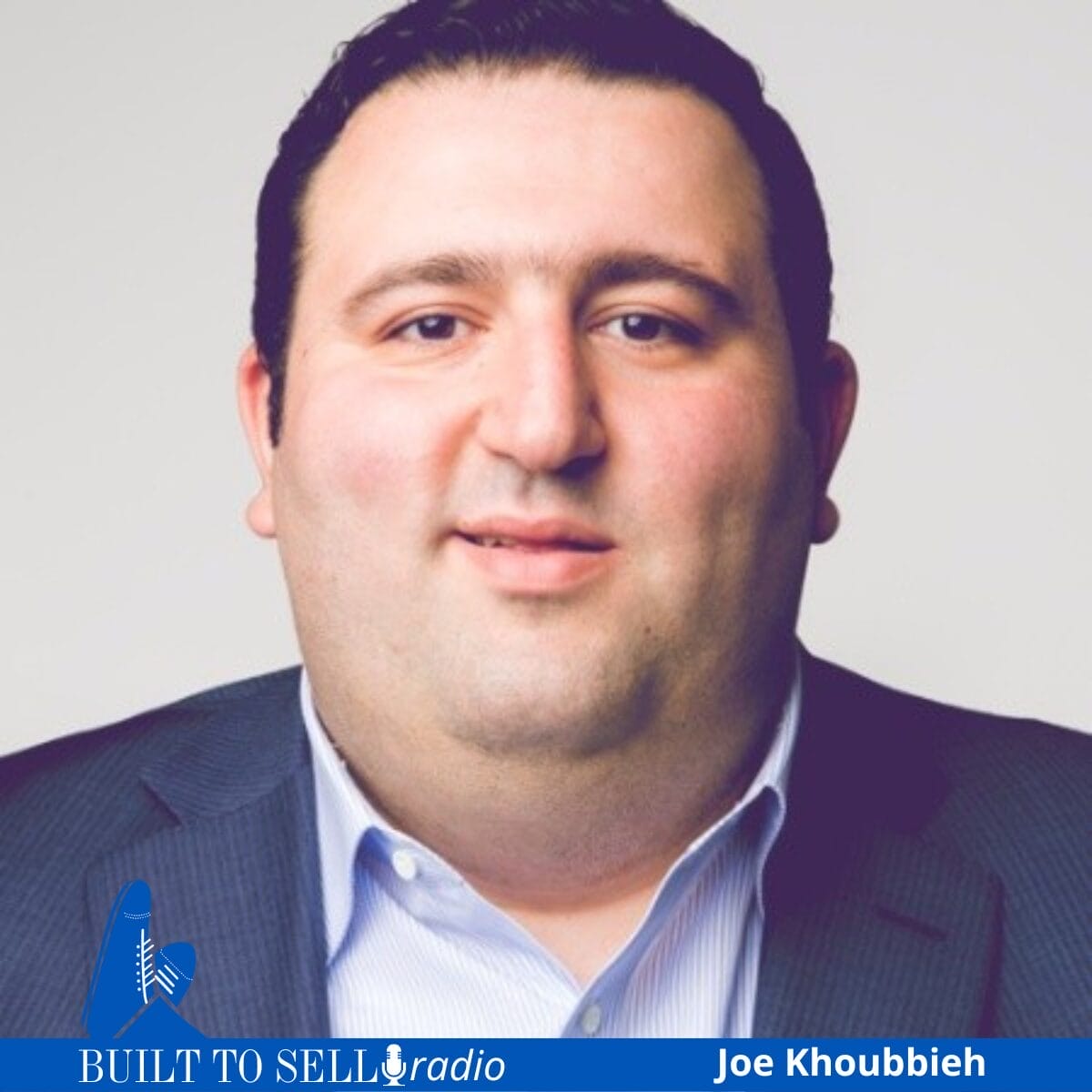About this episode
Joe Khoubbieh is the Chief Investment Officer at Valsoft, one of the most prolific acquirers of software companies in the last few years. In 2023 alone, Valsoft completed 25 acquisitions in ten countries. In total, Valsoft has acquired 95 companies and has paid the founder 100% of their proceeds in cash in all 95 deals.
In this week’s episode of Built to Sell Radio, we get inside Joe’s head and find out how he evaluates companies to buy, how he structures a role for the founder post-acquisition, the downside of selling to private equity, dealing with egos, and what to do when an acquirer tries to re-trade. During this episode, you’ll discover how Joe:
- Evaluates the satisfaction of a customer base.
- Assesses sources of revenue.
- Gauges the quality of a team.
- Structures an owner’s role post-acquisition.
- Thinks about the downside of the private equity playbook.
- Improves the acquired business.
- Manages the egos of the founders of the businesses he acquires.
- Evaluates the debt an acquirer will use.
- Feels about re-trading.
Show Notes & Links
If you liked this interview, you’ll love our weekly newsletter. Subscribe here.
Definitions
Churn: This measures the rate at which customers stop using a subscription-based service or product over a given period of time. A high churn rate can be problematic as it indicates customer dissatisfaction or lack of engagement.
Covenant: A promise to do (or not do) something. Typical covenants you may need to sign are a covenant not to compete directly with your acquirer and/or not hire your current staff in another capacity for a period of time.
Put Option: A put option is a bit like an insurance policy for your stock investment.
Imagine you own a stock that you think might go down in price, and you want to protect yourself from losing too much money. A put option can be your safety net.
Here’s how it works:
- You pay a fee, known as a “premium,” to buy a put option or negotiate put options when you sell your company.
- This option gives you the “right” to sell your stock at a predetermined price, called the “strike price,” by a certain date.
- You don’t have to use this option if you don’t want to. It’s like paying for car insurance but hoping you never have to use it.
So, let’s say you own a stock that’s currently worth $50. You buy a put option with a strike price of $40 that expires in one month. You pay a premium, maybe a few dollars per share, for this right.
Two things can happen:
- The stock price drops to $30. Yikes! But because you have the put option, you can still sell your stock for $40, the strike price. So, the option saves you from a bigger loss.
- The stock price stays the same or goes up. You decide not to use your option. It expires, and you lose the premium you paid. But your stock is worth more or the same, so you’re probably okay with that.
Remember, unlike owning a stock, which you can keep for as long as the company is in business, an option has an expiration date. Once that date passes, the option is either used (exercised) or it becomes worthless.
If you agree to roll a portion of your proceeds into stock of the company acquiring yours, you may be able to negotiate a put option which gives you the rights to “put” (i.e. sell) your shares to your acquirer at a predetermined price.
Re-Trading: This occurs when a buyer attempts to renegotiate the purchase price of a deal after initially agreeing to one. It is often seen unfavorably as it occurs after due diligence, seemingly exploiting newly discovered information.
Due-Diligence: This is a comprehensive appraisal of a business or investment undertaken before a merger, acquisition, or investment. It seeks to validate the information provided and uncover any potential risks or liabilities.
Earn-out: This is a financing arrangement for the purchase of a business, where the seller must meet certain performance goals before receiving the full purchase price. It reduces the buyer’s risk and aligns the interests of both parties post-acquisition.

About Our Guest
Joe Khoubbieh
Joe, an alumnus of HEC Montreal with a bachelor’s degree in Finance, is also a Chartered Financial Analyst (CFA). His professional journey commenced at the Bank of Montreal, where he contributed as a research associate within the portfolio management team. Subsequently, Joe expanded his expertise by dedicating three years to Sales and Investment Banking at Dundee Capital Markets. He further honed his skills in asset management when he joined a Montreal-based hedge fund, taking on the role of portfolio manager.
In this capacity, Joe played a pivotal role in launching and developing the wealth management division of the company. His career then took a significant turn when he was appointed the lead portfolio manager for both public and private equity at a prominent single family office, where he continues to apply his extensive knowledge and experience in finance and investment.


